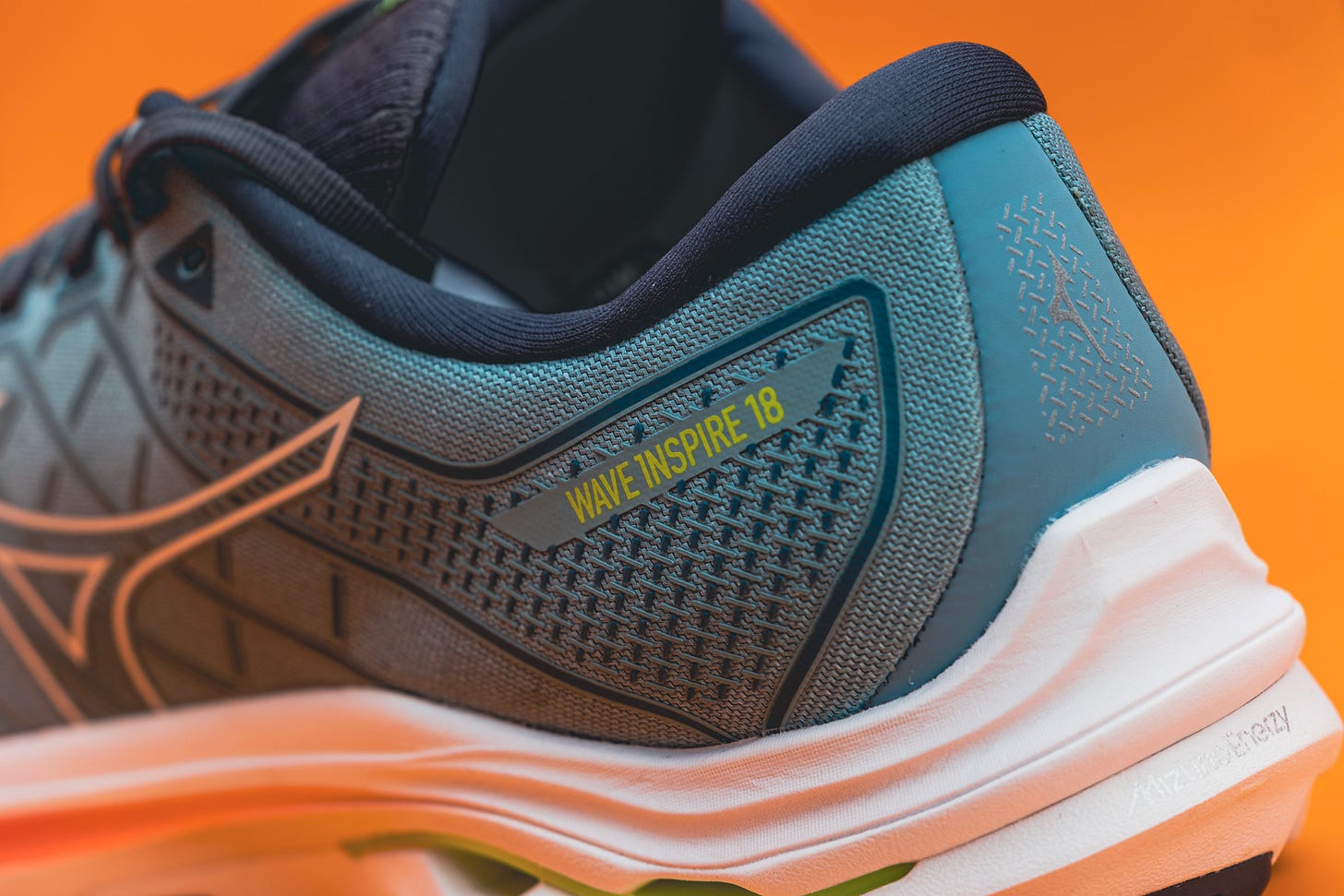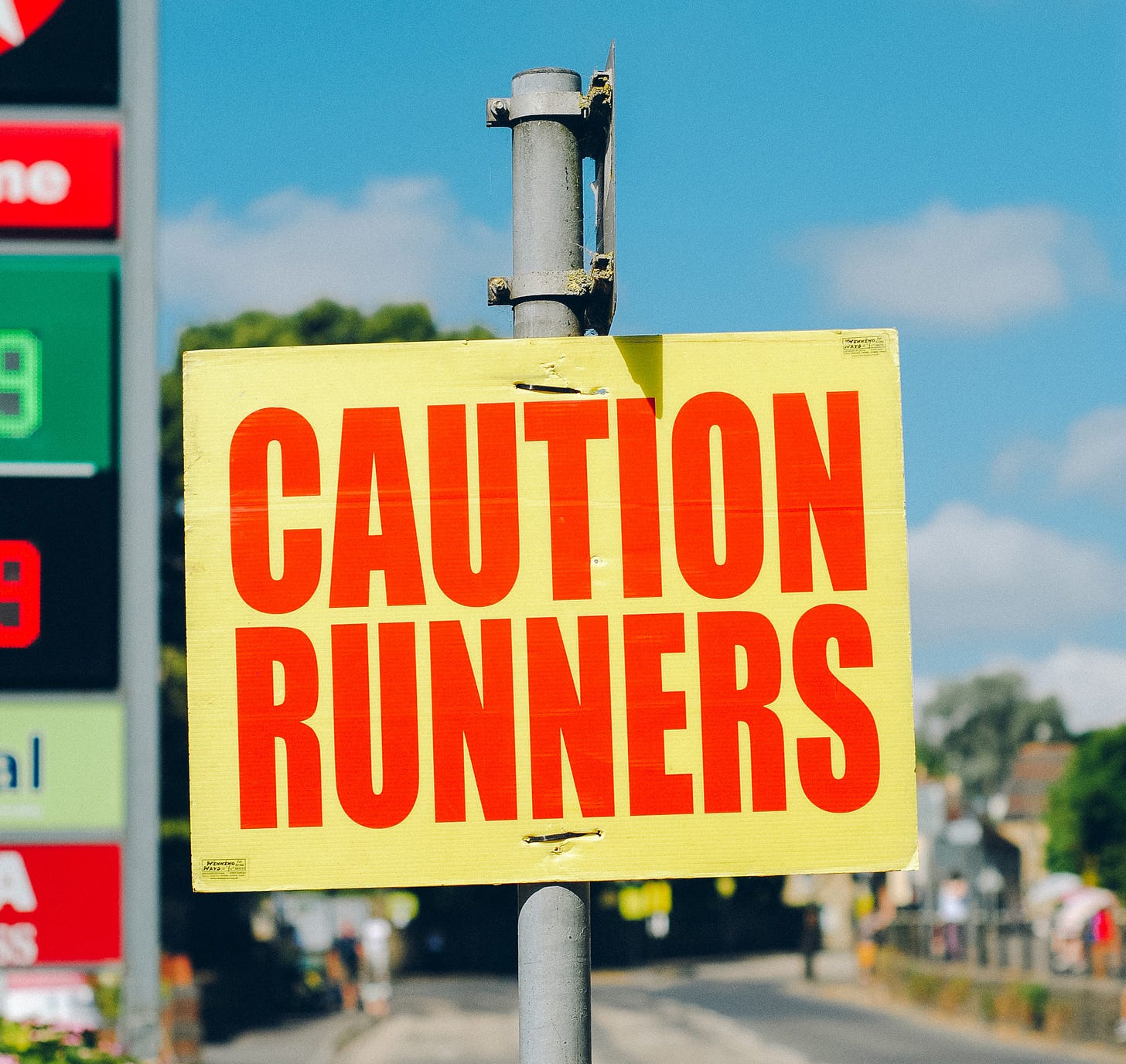What's in a running shoe?
Is it just EVA midsole and super-lightweight knitted mesh upper? Or is it heart, soul, and memories of miles gone by?
I really hope my face doesn’t betray the vacant look I fear it does. Jostling between angsty teenagers and confused-looking mothers who are desperately seeking to strike the balance between what is affordable and what their aforementioned teen offspring consider to be cool, I am staring at a wall of shoes. It’s a bleak and dreary late December day in 2010 in that fuzzy time vacuum between Christmas and New Year, and like many others before me and hopefully many more to follow, I’ve decided I like the idea of running.
With my only existing running knowledge being that ‘it’s bad for your knees’ and a perfectly acceptable synonym for it is ‘jogging’, I am a little lost. Not just metaphorically, but probably also physically. I’m in a very well-known British general out-of-town sports store that if I could go back and yell at my much younger and foolish self would be the last place I’d go for decent running shoes. But here I am. And there I go, picking up a pair of frankly hideous Reebok gym/run crossover shoes off the shelf that honestly look like something from at least three decades earlier.
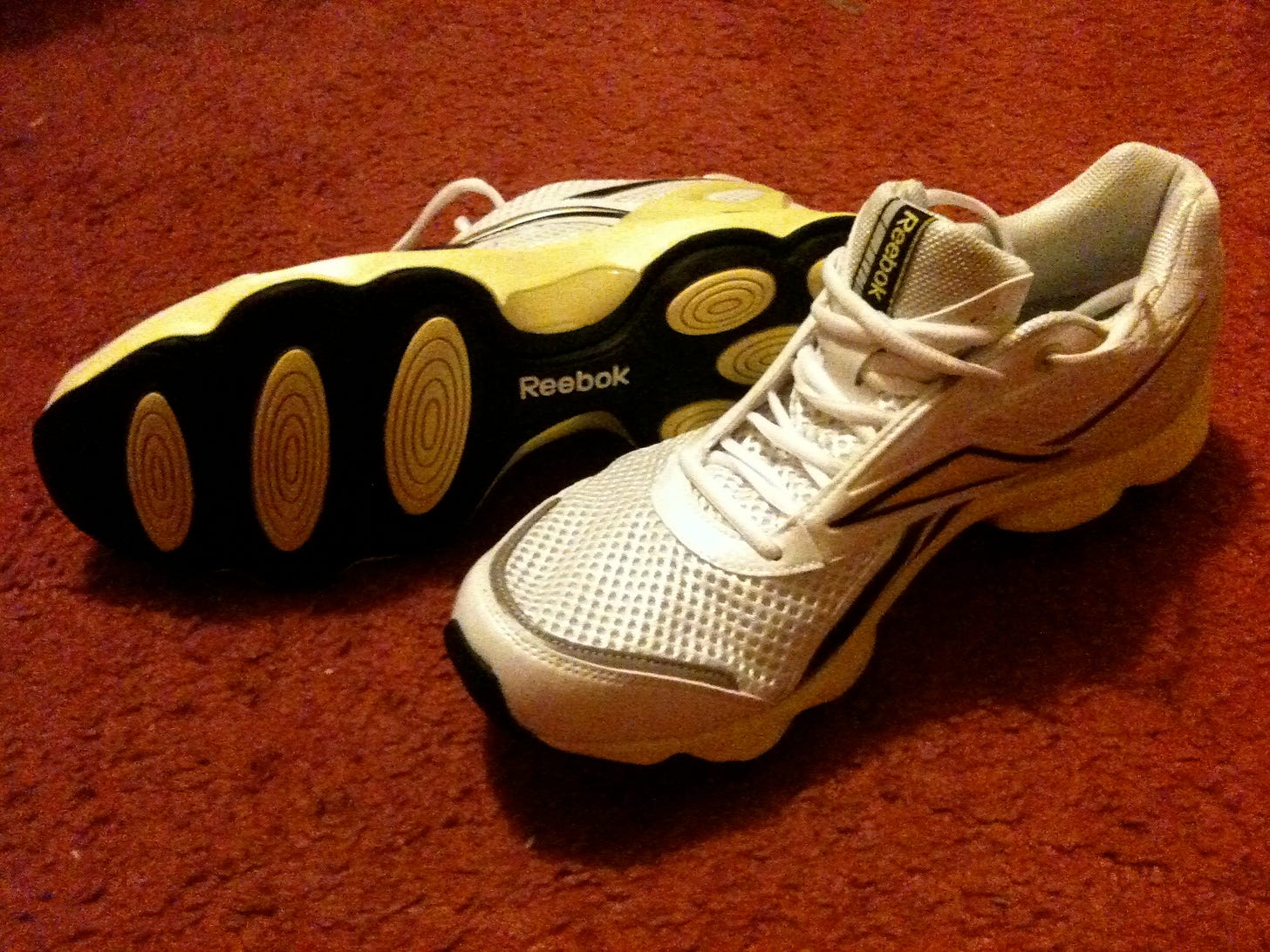
To this day, I’m not sure what made me choose these monstrosities – I would later learn they were just as terrible for my gait as they were for my barely existent fashion kudos – but these were the vessel that I began my running journey in more than a decade ago. Whether I like it or not, I’ll always remember them, and I’ll always be thankful to them. Huffing and puffing my way 3km around the block, shocked that I was nowhere near as fit as I imagined I was, the good ship Reebok always got me home in one piece, and with a back pocket full of endorphins to boot. I even completed a couple of 10k races in these street surfers after trudging my way up to the distance. I look back at them now like you look at old pictures of yourself at university. That hair. Those glasses. That outfit. The combination of shame, comedy, and nostalgia blend together in a perfect kind of way that makes you feel fond, even if you knew then when you do now, you’d do it totally differently. Or would you?
Everlasting evolution
The humble running shoe has come a long way since my Gym Dad of the Year 1985 Reebok classics. Midsoles have got springier and more absorbent, heel drops have shrunk to wafer-thin levels, sock liners have come and gone and come and gone again, and a whole brand has been founded on the idea of the perfect rocker shoe. But we have to turn our attention to Brazil in 2016 to see perhaps the most important evolution that has happened to running shoes in recent memory.
The streets of Rio de Janeiro will never forget the battering they took in the 2016 Olympic Marathon from Messrs Kipchoge, Lilesa, and Rupp who took the medals while wearing a new prototype Nike shoe with a special ingredient: carbon. That shoe spawned the Vaporfly 4%, a shoe featuring a carbon plate within the midsole, which helped to make fast runners even more efficient by further enhancing that rocking or rolling principle and taking some strain away from the ankle. Records began to tumble, and the aforementioned superhuman Elioud Kipchoge even managed to run an unofficial world record sub-two-hour marathon in a pair of carbon plate shoes. Within five years, almost every brand had at least one model with a carbon plate in the midsole. It’s hard to find a better definition of marketing’s most frivolous, fluffy, and overused phrase: game changer.
Some argue this evolution is a step too far, others say it’s simply the natural progression of technology, the same way we realised that making shoes that didn’t add 5kg to your overall weight might help you run faster. Technology evolves, and as long as the elite runners seek to break records and win shiny bits of metal, we mere mortals will continue to use the trickle downs for our weekly parkrun or ambles across the local trails.
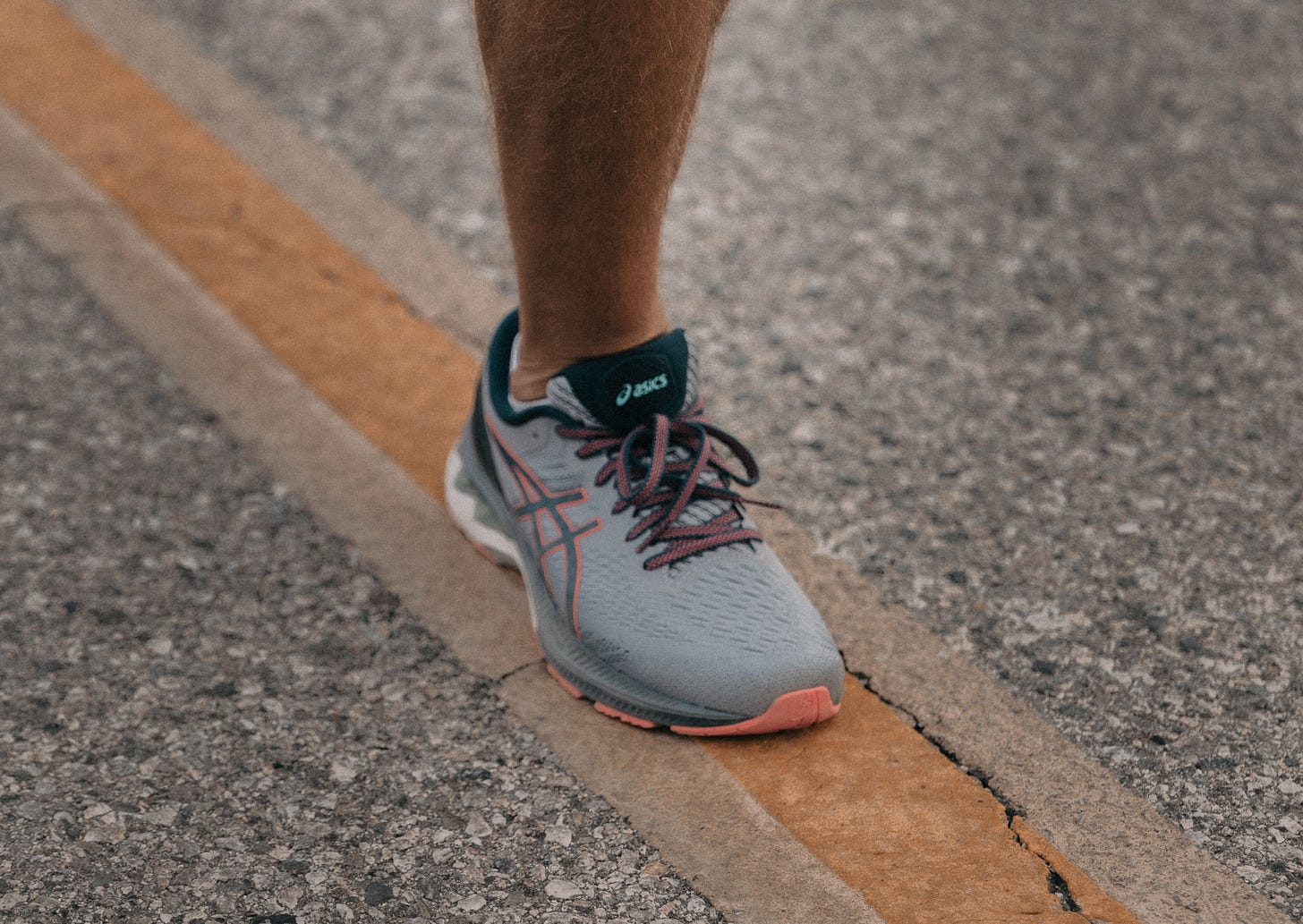
Comfortable as an old shoe
One thing most runners have in common is that urge to try something new, especially if it promises to deliver us a shiny new PB, or even just mild improvement of some kind. To that end, I have quite the colourful list of relationships when it comes to shoe brands. After I outgrew the first shoe that showed me any attention in Reebok, I rebounded to Nike (I’d love to know how many people’s first time was with the Oregon-based behemoth), then quickly shot across to Mizuno where I have been pretty much ever since.
Okay, okay, I admit it. I have had spells of being unfaithful to my long-time Japanese lover. There was that drunken Christmas party fling with Asics that ended up almost ‘getting serious’ by running our first marathon together. There was that weird rebellion stage where I thought an exotic European full of big promises of flawless pronation correction and forefront foot striking would satisfy me – but Hoka and I never got off the right foot (ahem). I even went back to an old flame (not Reebok, I’m not that crazy) – but even doing new and exciting things together like overseas races couldn’t reignite things the way they were before with Nike. I’m ashamed to admit this reader, but there have even been times in my running life of ‘open relationship’ with multiple brands sharing space on my shoe rack, jealously glancing at each other at the sound of a Garmin firing up in the other room.
But I’m in my 30’s now. My days of not knowing what I wanted, and more importantly what I needed, are behind me. Mizuno (specifically the Wave Inspire series) is who I want to grow old with. Who I want to bring the pitter patter of junior parkrunners into the world with. We’ve conquered half marathons, we’ve shattered PBs, we’ve grabbed World Marathon Major stars together, we’ve pushed each other outside of our comfort zones while offering reliable support and dependency to each other at the same time. I love them so much, I’ve even ‘cloned’ my current pair so I have a set of appropriate footwear for wet and dry weather. Sure, the memories of those other wild, bizarre, and alluring shoes of my youth will always have a place in the back of my mind, but Mizuno is my forever shoe. The one in which I will always look to first for my future running challenges.
Oooh, a sale on the On website? I have always liked Switzerland…
What running races are on in March 2023?
We’re fast approaching Spring marathon season, and March is usually when a lot of us start getting excited about races and events in the weeks ahead. I, myself, have a half marathon I’m woefully underprepared for this coming Sunday. But what else is happening around the UK in this month of hope?
12 March
Great Yarmouth Seafront Half Marathon | MK Festival of Running | Shrewsbury 10k | Stafford Half Marathon
19 March
Weymouth Half Marathon | Cardiff Taff Trail Half Marathon | Eastleigh 10k | Mad Dog 10k | Wigan Festival Half Marathon and 5k
25 March
Great British Seaside Marathon and Ultra
26 March
Derby 10k | Liverpool Half Marathon and 10 Mile Race | Welshpool 10k | Wolverhampton 10k | Droitwich Half Marathon | Sheffield Half Marathon | Ashby 20 | Merthyr Half Marathon | Salisbury 10 Mile
A training run to try
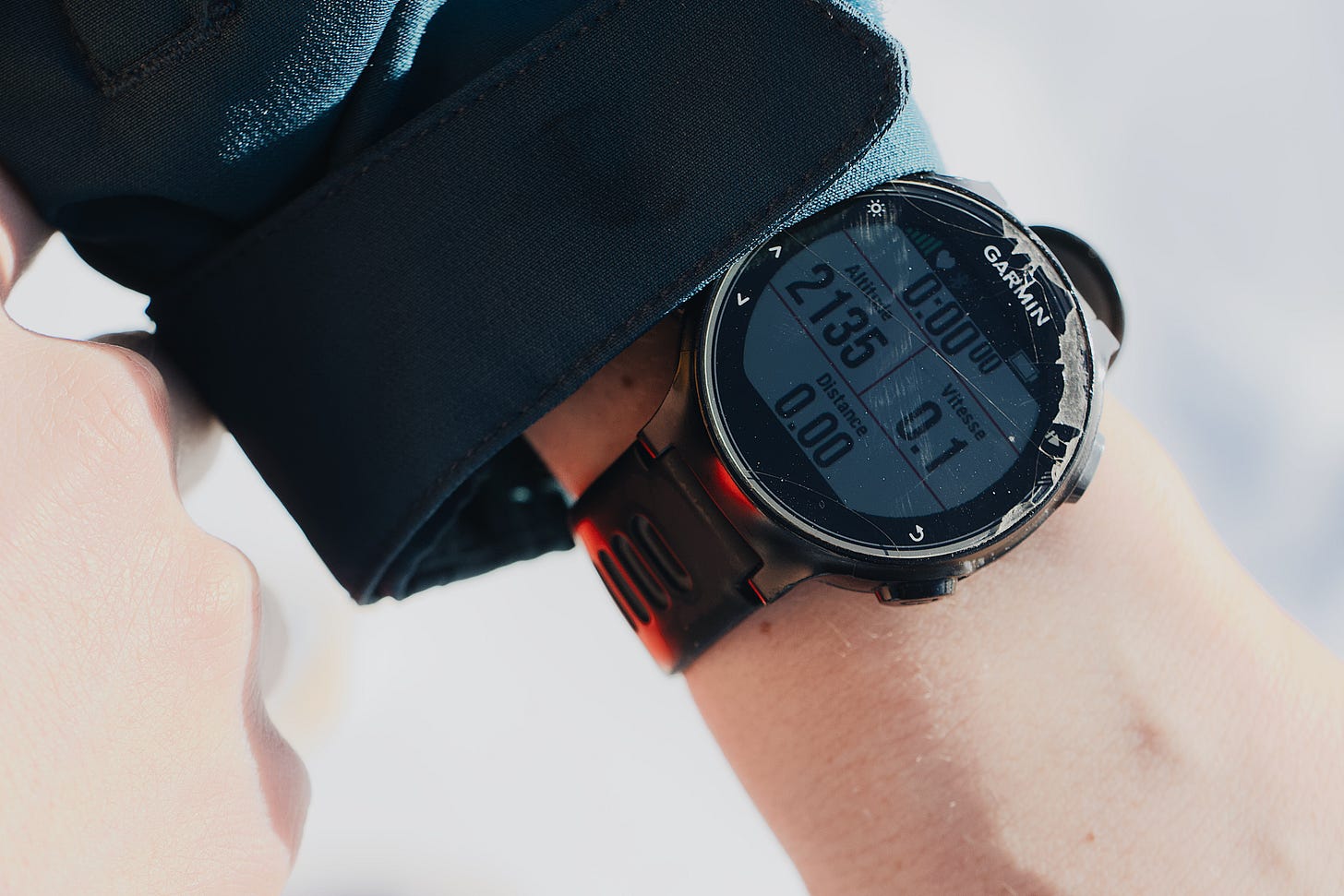
Because my nonsensical ramblings might not be enough for you all, I’ve decided to include a breakdown of some interesting training runs for you to try in some of these newsletters. Today, I’ll discuss the finer points of what I like to call, the race yourself home.
I first discovered this type of run while training for the London Marathon in 2016 and it was one of those runs where I thought: “why have I never tried this before?” – it has the right combination of control, progression, and competition.
The premise is simple; run out from home along as clear a route as you can manage (not too many roads to cross etc) for 15 minutes at a middling kind of pace – maybe 60-70% of your maximum effort. When the 15 minutes are up, turn around and get your race head on – you have to get back faster than 15 minutes. If you manage it, then you have essentially completed a successful negative split run (a run where you run the second half faster than the first), which is a great habit to get into especially for races. If your body gets used to the latter half of runs being where the effort needs to be highest, you’ll find you will finish races stronger. Naturally, you can experiment with the method: you could try longer spells such as 20 or 30 minutes out, or you can adjust the level of effort in the first half to make it easier or more challenging as you so desire.
The key to this, as with any kind of training run, is to make it just a part of your overall work for the week or month. Don’t do this run every time, but throw it in once a week or maybe twice a month and see how you like it. It can be a particularly fun one to try with friends or a running club too. But just remember, you’re racing yourself, so you can’t lose.



